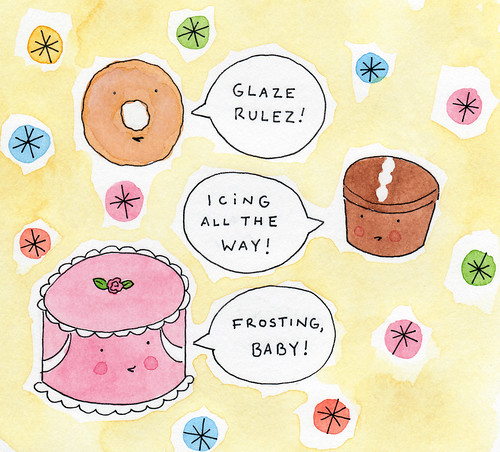
There are times in life when we find ourselves confronted with serious questions; in seeking answers, we might just have a defining moment or two. This is one such time: we are now going to discuss the question of icing versus frosting.
Often used interchangeably, frosting and icing are in fact different. Frosting tends to be thick and gooey, with a cream or butter base. It is slathered on cake layers, or applied in fluffy waves. Icing is thinner, sometimes with simply a sugar base, and creates a glaze on cakes and pastry, such as the kind you find on coffee cakes.
This idea is backed up in a Williams-Sonoma release simply entitled Cakes, in which it is noted that icing is "used to coat and/ or fill a cake...similar to a frosting, and the terms are frequently used interchangeably"...but ultimately "an icing is generally thinner and glossier" than frosting, which is "a thick, fluffy mixture, such as buttercream, used to coat the outside of a cake." Of course, the book even goes on to even differentiate a glaze from the two as being "thinner than either a frosting or an icing"...which makes the slope all the more slippery--but does further define the difference between these sweet toppings.

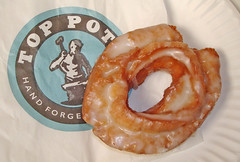
GLAZE: Thinnest type of sugar topping, often made with just a sugar base. Usually translucent. Common on cinnamon rolls, doughnuts, and heavier cakes like pound cake that don't need a lot more on top.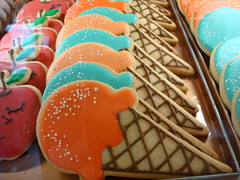

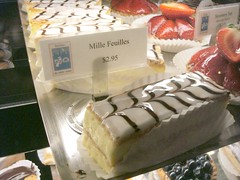
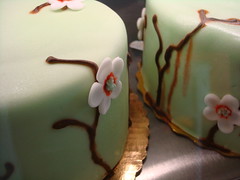
ICING: Thicker than a glaze but not always opaque. Can be made with a sugar base or may also include egg whites, butter or cream. The term "icing" is often used interchangeably with "frosting". Coffee cakes and cookies are often "iced" rather than "frosted".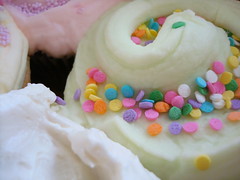

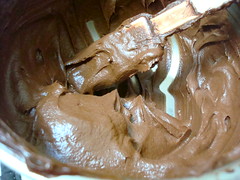
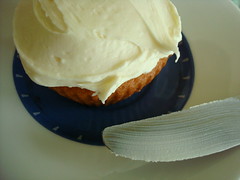
FROSTING: The thickest of the lot, opaque and fluffy; think buttercream frosting on a birthday cake.
